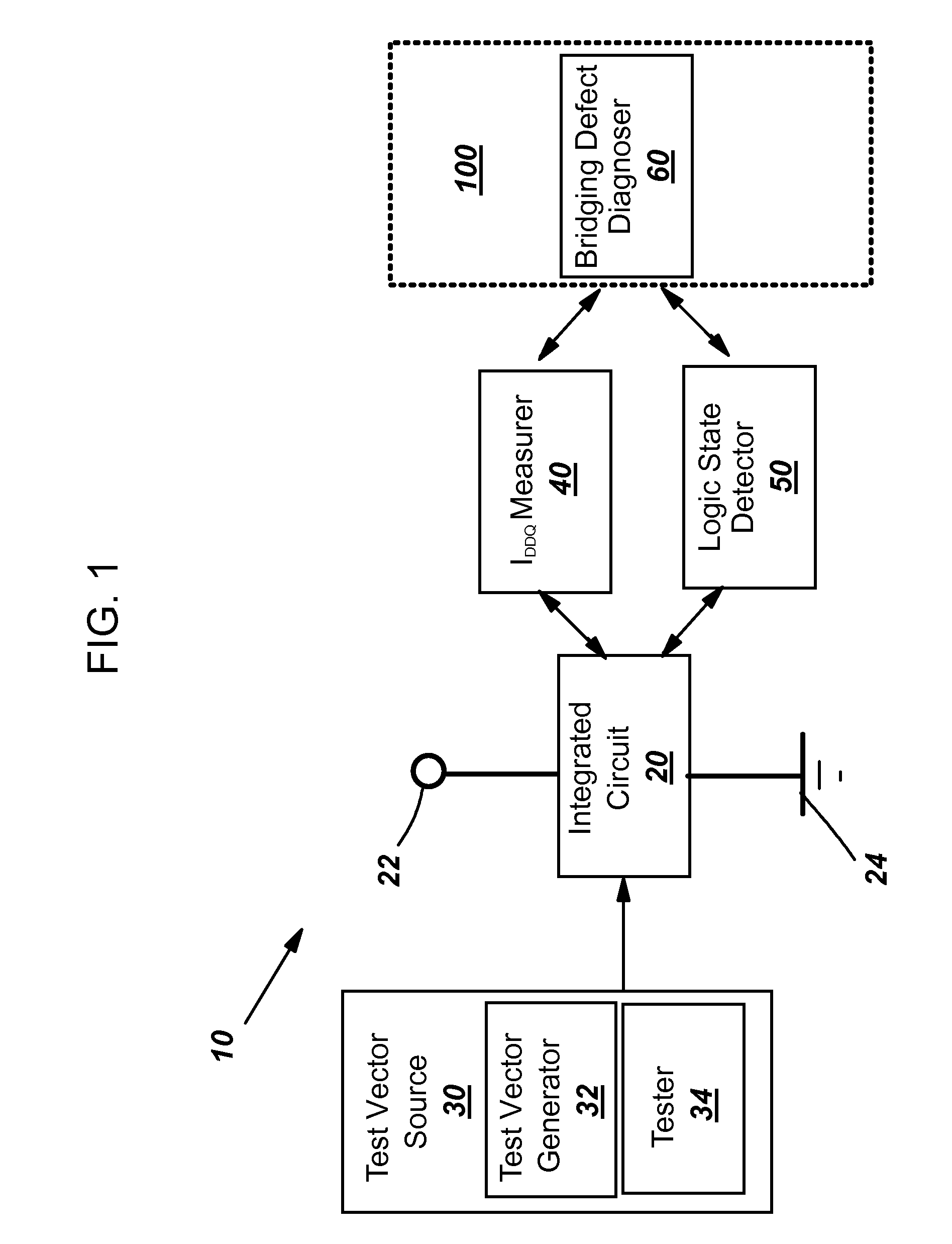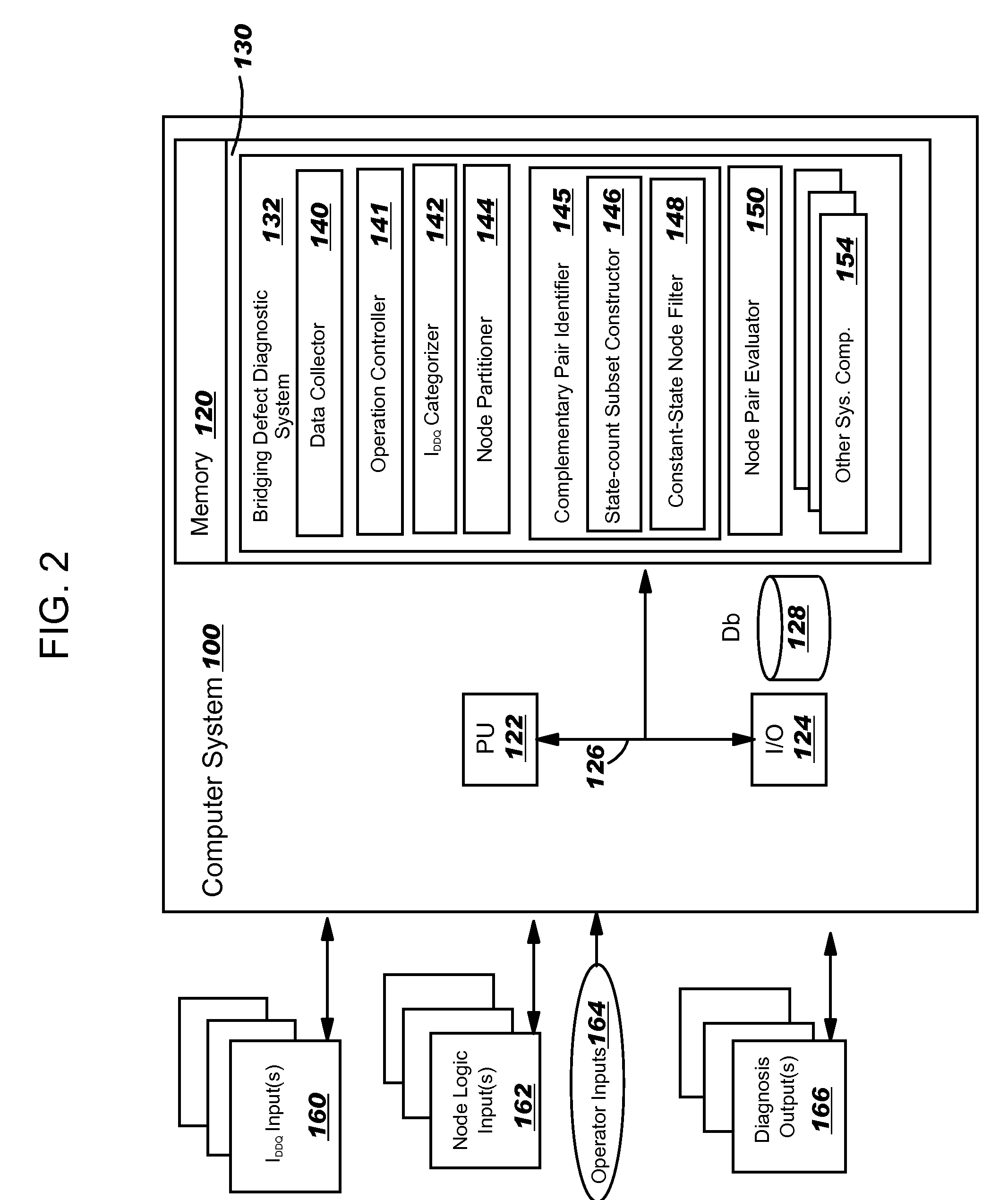Exhaustive diagnosis of bridging defects in an integrated circuit
a technology of integrated circuit and bridging defect, applied in the field of exhaustive diagnosis of bridging defect in integrated circuit, can solve the problems of ic with undetected bridge, bridging defect, escaping detection, etc., and achieve the effect of saving system resources in computation
- Summary
- Abstract
- Description
- Claims
- Application Information
AI Technical Summary
Benefits of technology
Problems solved by technology
Method used
Image
Examples
Embodiment Construction
[0027]The following detailed description of embodiments refers to the accompanying drawings, which illustrate specific embodiments of the invention. Other embodiments having different structures and operations do not depart from the scope of the present invention.
1. System Overview
[0028]Referring to FIG. 1, a schematic view of an illustrative bridging defect diagnosis system (diagnosis system) 10 is shown. According to one embodiment, diagnosis system 10 includes an integrated circuit (IC) 20 that includes multiple nodes as should be appreciated; a test vector source 30 including a test vector generator 32 and a tester 34; an IDDQ measurer 40; a logic state detector 50; and a bridging defect diagnoser 60. Integrated circuit (IC) 20 may be coupled between a positive power supply (VDD) 22 and a ground 24. In operation, test vector generator 32 generates test vectors and tester 34 inputs the generated test vectors into IC 20, which drives / sets the nodes on IC 20 to different logic stat...
PUM
 Login to View More
Login to View More Abstract
Description
Claims
Application Information
 Login to View More
Login to View More - R&D
- Intellectual Property
- Life Sciences
- Materials
- Tech Scout
- Unparalleled Data Quality
- Higher Quality Content
- 60% Fewer Hallucinations
Browse by: Latest US Patents, China's latest patents, Technical Efficacy Thesaurus, Application Domain, Technology Topic, Popular Technical Reports.
© 2025 PatSnap. All rights reserved.Legal|Privacy policy|Modern Slavery Act Transparency Statement|Sitemap|About US| Contact US: help@patsnap.com



